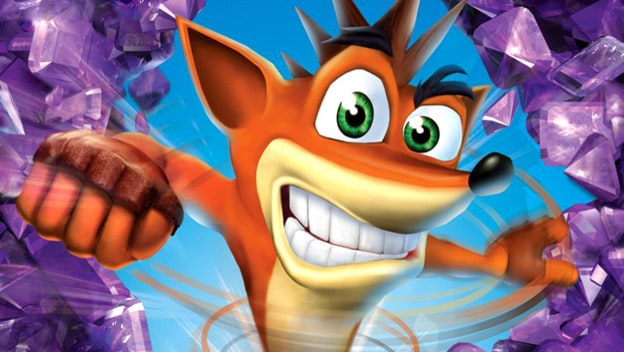Let’s talk about Crash Bandicoot. Or maybe let’s not, because Crash Bandicoot kinda sucks. But let’s indeed use Crash Bandicoot as a springboard into a more interesting question. It’s because Crash Bandicoot N. Sane Trilogy is in the news this week that I find myself thinking about nostalgia. Specifically, the role of nostalgia in our corner of pop culture, the corner littered with references, inside jokes and constant callbacks to what is said to be a bygone era. But think about it. When you walk into a GameStop or a Spencer’s or… a Hot Topic or something – is it really so long gone?
Do we really miss Crash Bandicoot? Like, really? Do we miss Crash Bandicoot the same way we miss a toy from our childhoods or an old home or apartment, something that exists only in our memories? That’s what nostalgia is, after all: a feeling of fondness for the past. It’s that warm feeling in your gut when something reminds you of simpler times, when you didn’t have to pay rent or worry about the next racist joke you overhear in the office.
Maybe that’s why nostalgia is such a hot commodity. Nintendo releases junk all the time that points back to the mid-eighties and the height of the NES. Sega does it, Sony does it, and movie studios do it too. Most of us were kids in the eighties, and the market is flooded with toys and trinkets, t-shirts and monthly loot boxes. The eighties are even creeping away to the 90s, as games like Crash Bandicoot and Tony Hawk’s Pro Skater spring back to life after years of ostensible silence.
On the other hand, I don’t really feel like nostalgia is a thing anymore when it comes to brands. Since when has any of this stuff, these licenses and characters, been unavailable? When have Super Mario, Sonic the Hedgehog or even Crash Bandicoot been long-forgotten memories and foggy recollections of a time when life felt less cruel? Folks, I can walk into a GameStop right now and find two decades of content from any given “nostalgic” brand. I can hop onto the PlayStation Network and play Crash Bandicoot and Spyro the Dragon games until my eyes bleed.
I remember when Pac-Man and the Ghostly Adventures hit consoles, and a copy showed up in my mailbox for review. A little poster fell out of the case, a glow in the dark print of the hideous new star of a multimedia cartoon show based on Namco’s Mickey Mouse. Across the top in huge letters it said, “PAC IS BACK.” I wondered to myself at the time, “Where did he go? Was he missing? He sure has had a billion videogames since forever.” Since then, several more Pac-Man games have launched.

Sure, Crash Bandicoot in particular has taken a longer break than others, following a handful of lukewarm releases and a subsequent dormant period from Activision. But the content from before is still there, easily accessible and affordable. Even the goofy old commercials, featuring the strange man in the costume yelling into a megaphone, are preserved on YouTube.
What purpose then, does nostalgia as a brand serve? Are we reminding people of their pasts, or simply serving heaping mouthfuls of comfort food on a biannual basis? Is Assassin’s Creed or Call of Duty also considered nostalgic? Is Star Wars ? Where is the magic cutoff point between something just being around all the time versus it having nostalgic value? Perhaps the distinction is the casual fan, the mass market and its fickle attention span. That would explain same Pokemon GO received such a massive burst of energy from my peers, despite my quietly playing Pokemon Moon by myself a few months afterwards.
Maybe I’m just a huge nerd! That’s fine too.
